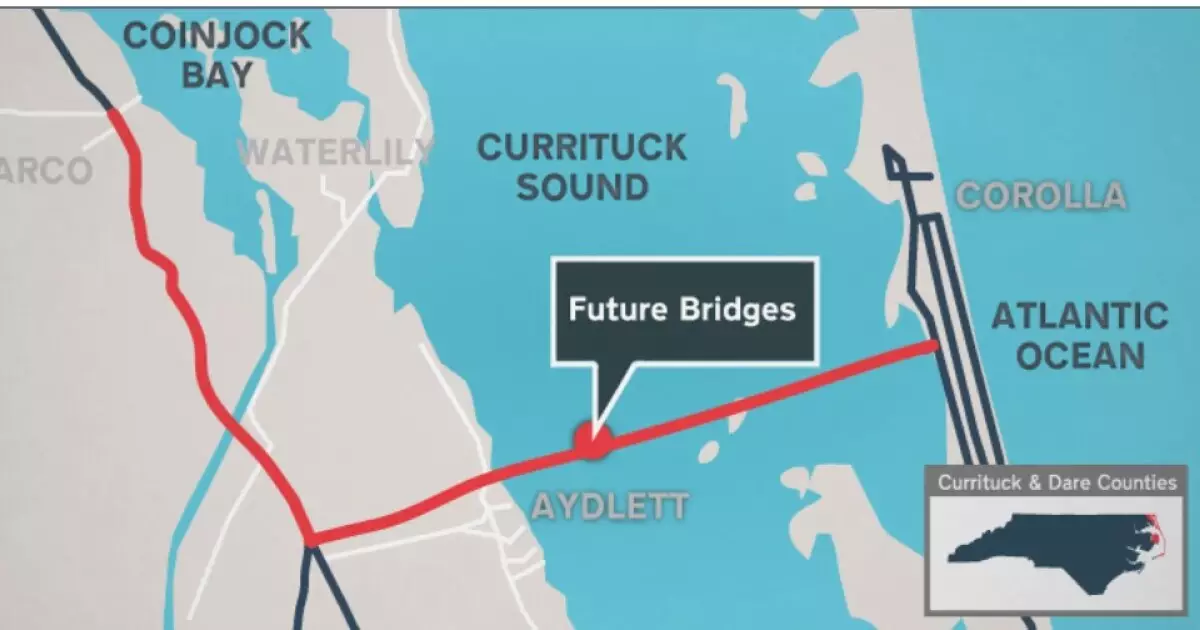North Carolina is currently gearing up to undertake its largest transportation initiative to date, a substantial project that aims to alleviate the infamous congestion on the Interstate 77 corridor in Charlotte. After receiving crucial support from both the Charlotte City Council and the Charlotte Regional Transportation Planning Organization (CRTPO), the North Carolina Department of Transportation (NCDOT) is set to explore a public-private partnership (P3) to fast-track this ambitious $3.7 billion endeavor. Not only is this undertaking reflective of the state’s growing transportation needs, but it also highlights the evolving landscape of infrastructure financing across the nation.
The recent approval of the I-77 South project marks a significant trend in the U.S., particularly in southern states, to consider public-private partnerships as a viable solution for daunting infrastructure challenges. This $3.7 billion project would widen the congested I-77 corridor by adding 11 miles of additional lanes—two express lanes in each direction—evolving the highway into a ten-lane artery. Given the extensive delays that would cost the state an extra $100 million every year, the urgency for action is palpable.
The NCDOT has recognized the financial limitations of its current budget and the necessity to involve private investment in order to realize such a large-scale project. Scheduled for the release of a Request for Qualifications by August of next year, the NCDOT expects considerable interest from firms globally. This indicates not only a growing inclination towards partnerships in procurement but also highlights the indispensable role of private investment in modern transportation infrastructure.
Learning from Previous Experiences
Historically, public-private partnerships have had mixed results in North Carolina. The I-77 North project, operated by the Spanish firm Cintra, garnered controversy and dissatisfaction due to its operational tolls, which many local residents found burdensome. Therefore, the NCDOT finds itself under considerable pressure to mitigate similar pitfalls with the I-77 South project. With strong public sentiment against tolls stemming from previous experiences, city officials have expressed their commitment to renegotiating better terms that prioritize the needs and concerns of residents.
Board member Ed Driggs highlighted the necessity of moving forward despite the lack of public enthusiasm for toll lanes. He articulated a compelling rationale: “We understood managed lanes are not popular, and the I-77 North experience was bad, but we decided unanimously that in these circumstances, the best course is to move to the next step.” By acknowledging and addressing the lessons learned from past projects, NCDOT aims to strike a balance between operational efficiency and public acceptability.
NCDOT officials have also played a critical role in justifying the decision to pursue a P3 model by citing financial analyses that suggest dramatic cost savings. Studies indicate that utilizing a public-private partnership for the I-77 South project could save the state around $500 million compared to a traditional delivery method. This financial incentive is crucial as the state currently has approximately $600 million committed to the project, with a possibility of securing an additional $100 million.
However, the reality of urban transportation needs cannot be overstated. NCDOT’s Canipe has openly acknowledged the shocking scale and costs associated with urban development projects. The state’s shifting demographic landscape and rapid urbanization necessitate urgent infrastructure updates, with many residents experiencing the day-to-day effects of traffic congestion firsthand. As Canipe noted, “The scope, scale, and costs of the projects in our urban areas have really taken me by surprise.” His candid admission underscores the complexities and unforeseen challenges transportation planners are now tasked with navigating.
The Path Forward: Balancing Growth with Community Needs
Moving forward, the NCDOT aims to establish a working group with the CRTPO to draft the key terms of the concession agreement, ensuring that community voices and concerns are fully integrated into the project’s design and execution. This collaborative approach aims to not only forge a path for swift progress but also to engage residents by addressing their concerns directly.
Ultimately, the shift towards public-private partnerships in North Carolina is emblematic of broader trends in infrastructure financing across the United States as states grapple with the mounting costs associated with aging infrastructure and growing populations. The I-77 South project serves as a pivotal case study in balancing growth with community needs, showcasing both the opportunities and challenges that lie ahead in shaping the future of transportation in North Carolina.

